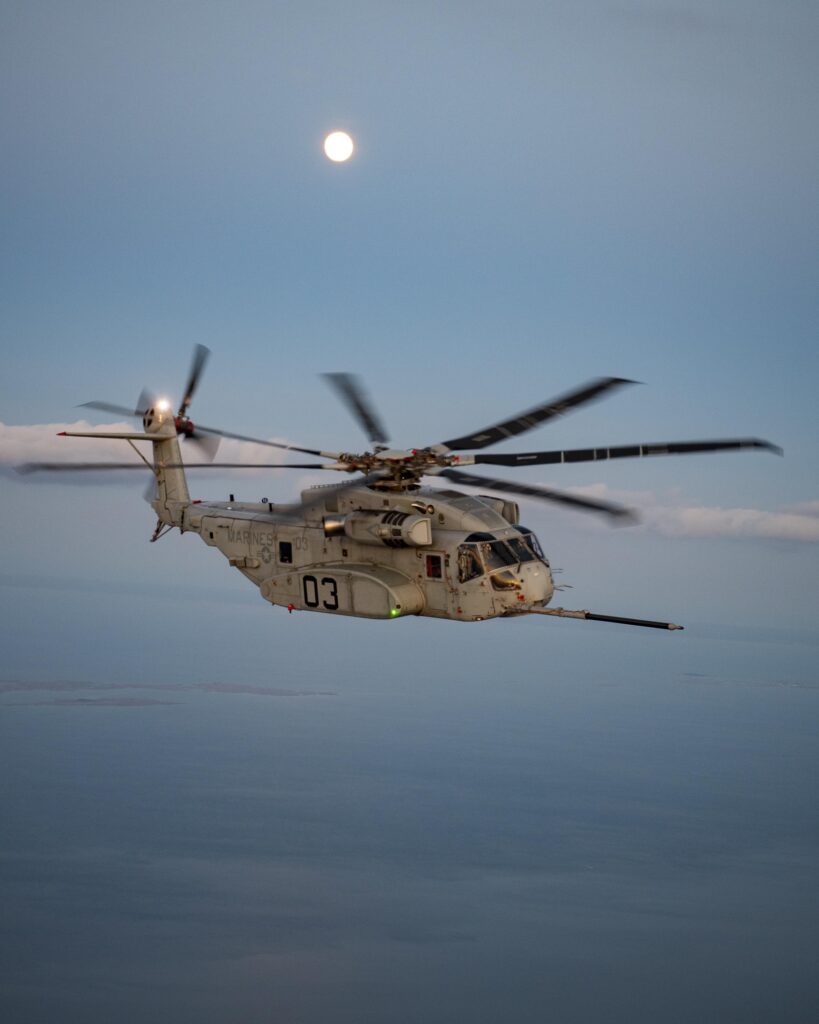
NATIONAL HARBOR, Md. — The Marine Corps expects the CH-53K King Stallion heavy-lift helicopter to reach initial operational capability “in several months,” the Navy program manager said.
Marine Col. Jack Perrin, the program manager, said that the first fleet CH-53K squadron, HMH-461, will have four CH-53Ks by the end of April, the minimum number needed to reach IOC and the number needed for a detachment to deploy with a Marine Expeditionary Unit.
The first deployment of the CH-53K is set for 2024. The Corps plans to field 5.25 fleet HMH squadrons with CH-53Ks. Perrin said the “.25” is an extra four aircraft for one of the squadrons, with each of the other four squadrons to be equipped with 16 helicopters. Other CH-53Ks will be assigned to a fleet replacement squadron and test squadrons, while others will be in process through the maintenance pipeline.
The Marine Corps’ eight HMH squadrons equipped with the older CH-53E in recent years have operated with only 12 helicopters instead of 16 because of attrition over the years. Three of these squadrons will be de-activated in the course of the commandant’s Force Design 2030 plan.
The Marine Corps has a requirement for 200 CH-53Ks. Full-rate production is planned for 2023. Full operational capability is scheduled for 2029.
In addition to the two low-rate initial production CH-53Ks delivered in October and February, there are seven in the Lockheed Martin Sikorsky production line in Stratford, Connecticut. Currently 46 aircraft ae under contract, including four for Israel. Long-lead materials are on order for another 14 CH-53Ks. Deliveries in 2022 will total four, followed by eight in 2023 and 16 in 2024. The production rate will reach two per month for the Marine Corps, plus one per month for foreign customers as needed.
Israel is the only foreign customer for the King Stallion so far. Potential customers include Germany, the Republic of Korea, and Switzerland, plus others who have expressed interest. Germany plans to run a competition that is expected to occur in 2022.
Perrin, who has flown more than 30 different types of aircraft, said the CH-53K, with its digital flight controls, is the easiest aircraft to fly in his experience. The stability afforded by the flight controls enables the CH-53K to easily land in a degraded visual environment such as dust cloud. It also makes aerial refueling more stable and reduces swaying of an external load.






